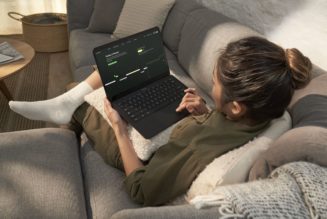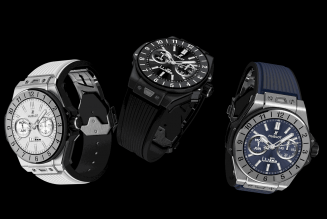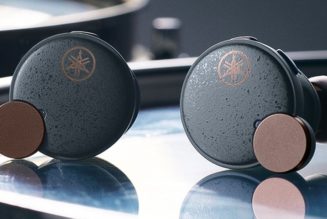It’s been over a year since Samsung released its shiny red Galaxy Chromebook 2. Its next shot at this device is now available for purchase, and it’s something, well, a bit different.
The new Galaxy Chromebook 2, as far as I can tell, is not nearly as red as its predecessor. (It’s pretty black and white.) But it does have a 360-degree hinge, and is more affordable with a starting price of $429.99, making it perhaps a more…practical purchase on multiple fronts.
What’s most interesting here is the display. Not only is this Chromebook 16:10 (a good aspect ratio — thumbs-up), but it also comes with a 2560 x 1600 screen. That’s certainly going to be one of the highest-resolution screens you can get at a $430 price point.
This is still a bit of a small screen at just 12.4 inches — smaller than its predecessor, which was a 13.3-incher. But the aspect ratio and resolution mean that it should be able to show more than other screens of this size. The extra vertical space will allow for more scrolling and multitasking space than you’d get on a typical cheap Chromebook, while the resolution enables clearer text and pictures. Students with visual impairments or learning disabilities, in particular, can benefit from larger and clearer text, so a screen like this is one way for schools to invest in accessibility.
:no_upscale()/cdn.vox-cdn.com/uploads/chorus_asset/file/23393247/Metis_12_WIFI_US_Silver_015_Dynamic3_RGB_4500x3000_4cf3e1a_scaled.jpg)
Specs-wise, the Chromebook 2 360 comes with 4GB of RAM and either 64GB or 128GB of eMMC storage as well as a 45.5Wh battery. (You should definitely buy the extra storage, which is only $20 more.) That’s all powered by an Intel Celeron N4500 — “Celeron” would be a very off-putting word to read in an article about a Windows laptop, but Chrome OS generally runs much better on weaker processors than Windows does.
For ports, you’ve got two USB-C, one USB 3.2 Type-A, one microSD slot, one combo audio jack, one nano security slot, and an optional nano SIM slot. The more expensive Galaxy Chromebook 2 doesn’t even have that USB-A, so that’s a win for the 360 in my book.
:no_upscale()/cdn.vox-cdn.com/uploads/chorus_asset/file/23393248/Metis_12_WIFI_US_Silver_019_Dynamic6_RGB_4500x3000_4cf3e1a_scaled.jpg)
This seems pretty clearly to be a “Galaxy Chromebook 2” in name only. It doesn’t look much like its predecessor. But it does look a rung or so nicer than the typical (ugly and old) devices that occupy school laptop carts, and almost certainly will deliver a better viewing experience (an area where schools should be investing). Durability, of course, is an important part of any student laptop, and while we can’t determine that from the pictures, previous Galaxy Chromebooks have been quite well-built.
Between the Galaxy Chromebook 2 360 and Microsoft’s new Surface Laptop SE, this is shaping up to be a year where PC-makers that are better known for premium devices take a stab at the education space. It’s creating some interesting options for schools as laptops become more central to the classroom experience. Perhaps the era of the stereotypically ugly and slow school laptop cart is coming to a close — but that will depend on how many schools actually opt to buy these fancy-screened units.









